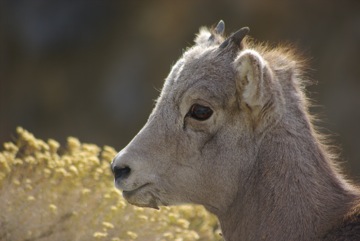Is SB1175 a way to stall so that “research” can be done?

Bighorn Sheep Lamb © Ken Cole
More bighorn ‘the Earth is flat’ madness :
Otter must decide bighorn issue by Saturday – Rocky Barker – Letters from the West, Idaho Statesman
What he and other sheep ranchers really want is more research to determine not only if disease is spread from domestic sheep to wild sheep, which they dispute, but also how the bighorn are dying and if there are ways of stopping the deaths and allowing the bighorns to thrive and grow without forcing the ranchers off of federal lands. They see the bill as giving them time, though an opinion presented by the Idaho Attorney General’s office suggested the bill won’t change the state’s legal position.
Unfortunately, the post does little more than push sheepman talking points, failing to mention that there is very little controversy about the spread of disease from domestic sheep to wild sheep – and the subsequent death of bighorns – in the scientific community, or that the single pumped up (thanks to articles like this) voice of controversy that does exist comes from the President of the Woolgrowers Association. So we’ll fill in a few of the gaps.
1. The Science
Let’s face it, domestic sheep diseases KILL bighorn sheep. You can read about this here:
A Review of Disease Related Conflicts Between Domestic Sheep and Goats and Bighorn Sheep
You may also read the abstract for an article in the Journal of Wildlife Diseases:
George, J.L.; Martin, D.J.; Lukacs, P.M.; Miller, M.W. In press. Epidemic Pasteurellosis in a bighorn sheep population coinciding with the appearance of a domestic sheep.
WAFWA Wild Sheep Report
You can also see a video segment on the issue here: Oregon Field Guide: Bighorn Pneumonia
And many more …
2. The Source(s)
I was told by Stan Boyd, lobbyist for the Idaho Woolgrowers, that his group has approached Senator Crapo for $900,000 to fund 3 years of Washington State University and University of Idaho research into what is killing bighorn sheep. The problem is that one of the primary scientists who does research at the University of Idaho, Caine Veterinary Teaching Center, in Caldwell is the President the Idaho Woolgrowers Association. Marie Bulgin has repeatedly testified that there is no evidence that domestic sheep diseases kill bighorn sheep in the wild. There is significant disagreement with this assertion as can be seen in this “Letter from David A. Jessup, CA Dept. of Fish and Game to Pattie Souchek, Forest Planner, Payette National Forest re Disease Transmission Between Domestic and Bighorn Sheep (July 31, 2006) ”
”
The money has not been appropriated yet, but if it is, will any of it go to the University of Idaho, Caine Veterinary Teaching Center under the supervision of Marie Bulgin?
Another question that comes to mind, couldn’t that $900,000 be better spent on keeping the woolgrowers who will be affected by changes in USFS policy whole? It’s not as if they don’t receive subsidization as it is.
3. Follow the Money
Here are subsidies received by wool growers affected by the likely changes on the Payette National Forest:
Soulen Livestock Co received payments totaling $1,010,401 from 1995 through 2006
http://farm.ewg.org/farm/persondetail.php?custnumber=009379239
Ron Shirts received payments totaling $214,707 from 1995 through 2006
http://farm.ewg.org/farm/persondetail.php?custnumber=008358031
Frank Shirts Jr received payments totaling $775,817 from 1995 through 2006
http://farm.ewg.org/farm/persondetail.php?custnumber=008376206
Guy M Carlson received payments totaling $110,307 from 1995 through 2006
http://farm.ewg.org/farm/persondetail.php?custnumber=008371346
Read the rest of this entry »


 Presumably SB1232 will pass the legislature and the Governor will sign it into law.
Presumably SB1232 will pass the legislature and the Governor will sign it into law.












